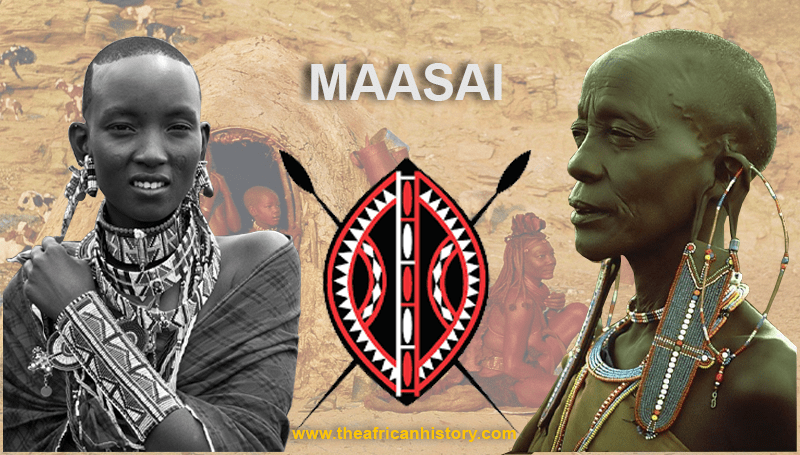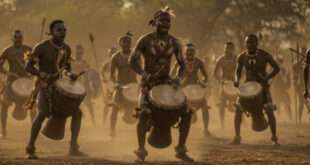The Maasai, or Wamasai in Swahili, are an ethnic group of Nilotic people who live in northern, central, and southern Kenya as well as northern Tanzania. They are well-known around the world because they live near the many game parks of the African Great Lakes and have their own customs and ways of dressing. The Maasai speak the Maa language, which is called l Maa. It is related to the Dinka, Kalenjin, and Nuer languages and is part of the Nilotic language family. Most Maasai people speak English and Swahili, which are the official languages of Kenya and Tanzania. Some older people who live in rural areas don’t speak either of these languages.
In the 2019 Kenyan census, there were 1,189,522 Maasai people, compared to 377,089 in the 1989 census. However, many Maasai see the census as the government meddling in their lives and refuse to take part or give false information. Many Maasai tribes in Tanzania and Kenya charge a fee for people to visit their villages and learn about their culture, traditions, and way of life.
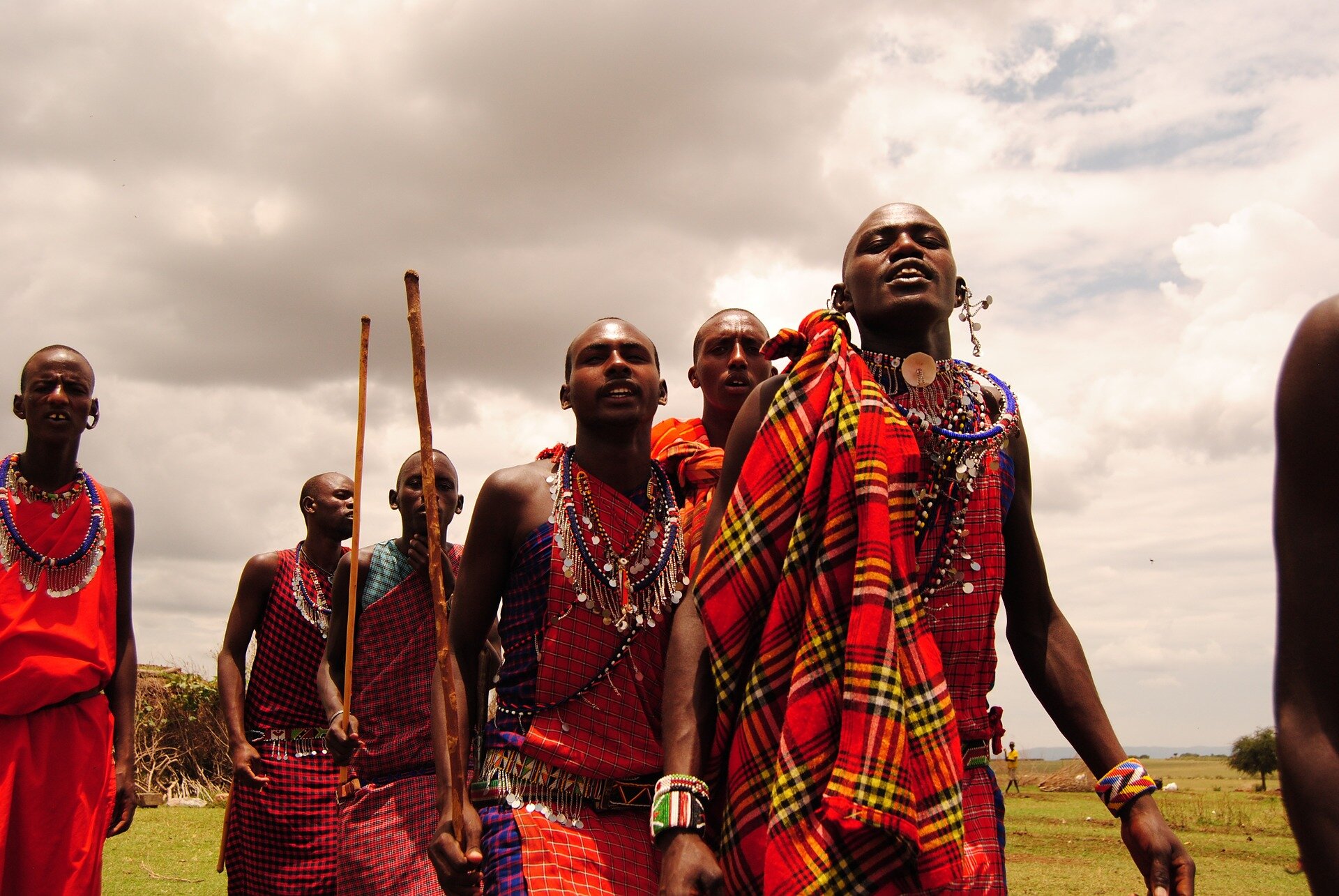
History
The Maasai live in the area around the African Great Lakes. They came from the South Sudan. Most people who speak Nilotic in the area, like the Maasai, the Turkana, and the Kalenjin, are herders. They are known for being fierce warriors and cattle thieves. The Maasai and other groups in East Africa have taken on customs and practices from nearby Cushitic-speaking groups. These include the age set system of social organization, circumcision, and vocabulary words.
Origin, migration and assimilation
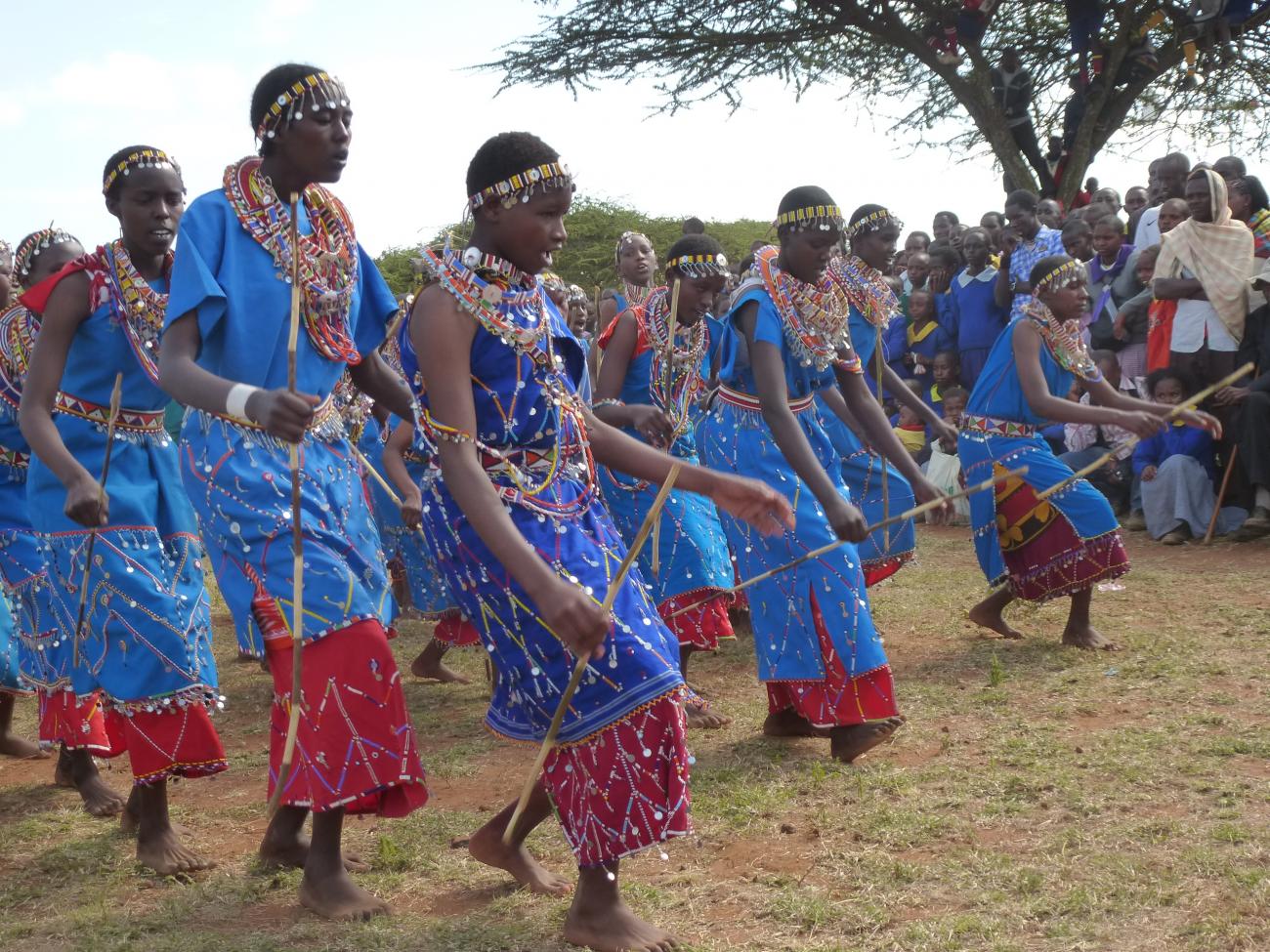
Many ethnic groups who had already settled in the area were forced to leave when the Maasai came. Other groups, mostly Southern Cushitic ones, were absorbed into Maasai society. The Nilotic people who were the ancestors of the Kalenjin also took in some early Cushitic people.
Settlement in East Africa
Around the middle of the 19th century, the Maasai territory was at its largest. It included almost all of the Great Rift Valley and the land around it, from Mount Marsabit in the north to Dodoma in the south. At this time, the Maasai, along with the rest of the Nilotic people, raised cattle as far east as Tanganyika’s Tanga coast (now mainland Tanzania). Raiders had spears and shields, but people were most afraid of their throwing clubs (orinka), which could hit their target from up to 70 yards away (approx. 100 metres). In 1852, it was said that 800 Maasai warriors were on the move in the area that is now Kenya. In 1857, Maasai warriors threatened Mombasa, which is on the coast of Kenya. This was after they had killed everyone in the “Wakuafi wilderness” in what is now southeastern Kenya.
Maasai warriors in German East Africa, c. 1906–1918
Because of this, the Maasai are the most southern people who speak Nilotic. The Maasai “Emutai” of 1883–1902 came after the time of expansion. Bovine pleuropneumonia, rinderpest (see 1890s African rinderpest epizootic), and smallpox all spread quickly during this time. The first person to say that 90% of cattle and 50% of wild animals died from rinderpest was a German lieutenant in what was then northwest Tanganyika. German doctors in the same area said that smallpox had left pockmarks on the faces of “every second” African. During this time, there was a drought. In 1897 and 1898, there were no rains at all.
Between 1891 and 1893, the Austrian explorer Oscar Baumann went to Maasai lands. In his 1894 book Durch Massailand zur Nilquelle, he wrote about the old Maasai settlement in the Ngorongoro Crater (“Through the lands of the Maasai to the source of the Nile”). Two-thirds of the Maasai are thought to have died during this time.
In the 1940s, most of the fertile highlands near Ngorongoro and the fertile land between Mount Meru and Mount Kilimanjaro, where the Maasai lived, were taken away from them. More land was taken to make wildlife reserves and national parks, such as Amboseli National Park, Nairobi National Park, Maasai Mara, Samburu National Reserve, Lake Nakuru National Park, and Tsavo in Kenya, and Lake Manyara, Ngorongoro Conservation Area, Tarangire, and Serengeti National Park in what is now Tanzania.
Maasai are herders, and the Tanzanian and Kenyan governments have tried to get them to settle down, but they have refused. They have asked for the right to let their animals graze in many national parks in both countries.
The Maasai people were against slavery and never agreed with the trade of people, so people from other places who wanted to enslave people avoided the Maasai.
The Maasai people live in twenty-two different areas, or sub-tribes. Each sub-tribe has its own customs, appearance, leadership, and languages. These subdivisions are known as ‘nations’ or ‘iloshon’ in the Maa language: the Keekonyokie, Damat, Purko, Wuasinkishu, Siria, Laitayiok, Loitai, Kisonko, Matapato, Dalalekutuk, Loodokolani, Kaputiei, Moitanik, Ilkirasha, Samburu, Lchamus, Laikipia, Loitokitoki, Larusa, Salei, Sirinket and Parakuyo.
Culture
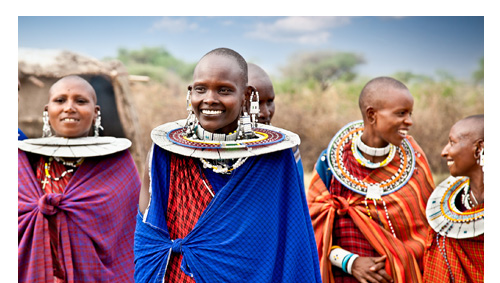
The Maasai worship only one god, who they call Enkai or Engai. Engai has two sides: Engai Narok (the “Black God”) is kind, and Engai Na-nyokie (the “Red God”) is angry. Maasai society is also based on two pillars or totems: Oodo Mongi, or the Red Cow, and Orok Kiteng, or the Black Cow, each of which has five clans or family trees. The lion is the Maasai people’s totem animal, but the animal can be killed. Since the lion is used in the rite of passage ceremony, the Maasai kill it in a different way than trophy hunters do.
Ol Doinyo Lengai, also known as the “Mountain of God,” is in the northern part of Tanzania and can be seen from Lake Natron in the southern part of Kenya. The laibon is the most important person in the Maasai religion. His or her jobs include shamanistic healing, divination, prophecy, and making sure that wars go well or that there is enough rain. Due to the rise of leaders, they now also play a role in politics. Any power a laibon had came from who they were as a person, not their position. A lot of Maasai have also become Christians or Muslims. The Maasai are known for their beautiful jewelry, which they have been selling to tourists as a business for decades.
Getting Maasai women to go to clinics and hospitals while they are pregnant has helped more babies live. The only exception is in very remote places. People think there is something wrong with a body that scavengers don’t want to take. Because of this, it is not uncommon for bodies to be covered in fat and blood from a slaughtered ox.
The Maasai’s traditional way of life revolves around their cattle, which are their main source of food. Cattle and children are used to measure a man’s wealth. A herd of 50 cattle is good, and the more kids you have, the better. A person is considered to be poor if he has a lot of one but not the other.
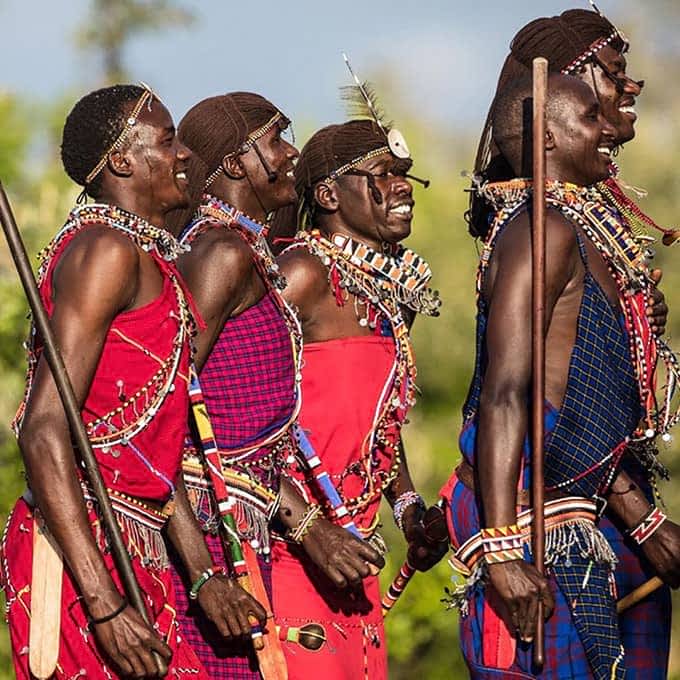
The Maasai’s cattle provide all the food they need. They eat the meat, drink the milk every day, and sometimes drink the blood. On holidays and for ceremonies, bulls, goats, and lambs are killed for their meat. In the past, the Maasai’s entire way of life depended on their cattle. However, as their cattle numbers have gone down, the Maasai have had to rely more and more on foods like sorghum, rice, potatoes, and cabbage (known to the Maasai as goat leaves).
People often think that every young Maasai man has to kill a lion before he can be circumcised and become an adult. Lion hunting used to be legal in East Africa, but it is now illegal. However, lions are still hunted when they attack Maasai livestock. Still, killing a lion makes you very important and famous in your community.
Body modification
The Maasai, like many other tribes, pierce and stretch their earlobes. Both men and women wear metal hoops on their stretched earlobes. The lobes have been pierced and stretched with thorns, twigs, bundles of twigs, stones, the cross section of elephant tusks, and empty film canisters, among other things. Women put different kinds of beaded jewelry in their earlobes and in smaller holes at the top of their ears. Male Maasai get circumcised as a rite of passage from being a boy to becoming a man. Women are also cut in the same way (as described below in social organization).
The Maasai are not the only people who believe and act on this way. In 1991 and 1992, 95 children between the ages of 6 months and 2 years old who lived in rural Kenya were looked at. It was found that one or more deciduous canine tooth buds had been taken out of 87% of them. 72% of the 111 older children (3–7 years old) who were looked at were missing either their mandibular or maxillary deciduous canines.
Genital mutilation
The Maasai have elaborate rites of passage that include surgical genital mutilation. These rituals help children become adults. “Emorata” is the Maa word for circumcision, and both men and women take part in this ritual. Most of the time, the elders do this ritual. They use a sharpened knife and makeshift bandages made of cattle hide.
The male ceremony is when the prepuce is cut off (foreskin). In the male ceremony, the boy is expected to stay quiet through the operation. Even though it’s only temporary, showing pain makes him look bad. Importantly, if the boy screams or moves in an unexpected way, the elder could make a mistake during the delicate and time-consuming process. This could lead to severe scarring, dysfunction, and pain for the rest of the boy’s life.
Excision (also called “female circumcision,” “female genital mutilation,” or “emorata”) is also done to young women as part of an elaborate rite of passage called “Emuatare.” During this ceremony, young Maasai girls are ritually circumcised and then married off early. The Maasai believe that female circumcision is important, and Maasai men may not marry or offer a much lower bride price to women who have not been circumcised. In Eastern Africa, women who aren’t circumcised can be accused of not being mature enough to be taken seriously, even if they have a lot of education and are members of parliament like Linah Kilimo.
Female circumcision is called “female genital mutilation” by some, and a lot of women who have been through it, like Maasai activist Agnes Pareyio, have harsh things to say about it. Excision used to be a part of the female rite of passage, but recently, a “cutting with words” ceremony with singing and dancing has been used instead. But even though the law and education have changed, the practice is still deeply ingrained, highly valued, and done by almost everyone in the culture.
Hair

At the age of 3 “moons,” the child is given a name and his or her head is shaved, except for a tuft of hair that goes from the nape of the neck to the forehead and looks like a cockade. Warriors are the only Maasai who have long hair, which they braid into thin strands. At a big meeting called Eunoto, people move up from warrior to junior elder. Former warriors have their long hair cut short, and elders must wear their hair short. At the Eunoto gathering, warriors who don’t sleep with women who haven’t been through the “Emuatare” ceremony are honored in a special way.
This would symbolize the healing of the woman.
Boys’ heads are shaved two days before they are circumcised. Warriors lose their long braided hair when they go through the Eunoto and become elders.
Music and dance

The rhythms in Maasai music are usually made by a group of singers harmonizing while a song leader, or olaranyani, sings the melody. The Maasai use drone polyphony more than most other African tribes.
Women sing lullabies, songs about humming, and songs about how great their sons are. Nambas, a call-and-response pattern, repeating phrases that don’t make sense, monophonic melodies, repeated phrases after each verse sung on a descending scale, and singers responding to their own verses are all things that are typical of female singing. When a large group of Maasai women get together, they sing and dance.
Eunoto is a ceremony that marks a warrior’s coming of age. It can last for ten days or more and include singing, dancing, and rituals. The warriors of the Il-Oodokilani do a kind of march-past and a dance called adumu or aigus, which people who are not Maasai sometimes call “the jumping dance.” (Both adumu and aigus are Maa verbs that mean “to jump.” adumu means “to dance while jumping up and down.”
Diet
Traditionally, the Maasai ate raw meat, raw milk, honey, and raw blood from Zebu cattle.
Most of the milk is used to make buttermilk or fermented milk (a by-product of butter making). By any measure, the amount of milk consumed is very high.
The Maasai raise goats, sheep, like the Red Maasai sheep, and cattle, which are more valuable.
Even though they are often eaten as snacks, fruits are a big part of what children, women who take care of cattle, and people who live in the wilderness eat.
Medicine
Because Western treatments are so expensive, the Maasai often use things from their environment to make medicines. These medicines come from trees, shrubs, stems, roots, and other parts of plants. These can then be used in many ways, such as boiling them in soups and eating them to help with digestion and clean the blood. Some of these cures can also be used to treat diseases or keep them from happening. Maasai people also put herbs in their food to keep their stomachs from getting upset and to help them digest. The Maasai depend on medicine made from plants in many ways.
Clothing
The clothes that Maasai people wear show that they belong to a certain ethnic group, that they live a pastoralist lifestyle, and what their social position is in the Maasai lifecycle. From this, they can figure out what their roles and responsibilities are at that point in their lives. A person’s jewelry, in addition to their clothes, can tell if they are male or female, married or single, and how old they are. Traditional Maasai clothing shows group identity and has many other meanings.
For example, young men wear black for a few months after they get circumcised. But people like the color red. Blue, black, striped, and checkered fabrics are also worn, as well as designs made up of many different colors. In the 1960s, the Maasai started to use commercial cotton cloth instead of animal skin, calf hides, and sheep skin.
The Maa word for a sheet that is wrapped around the body is shkà. Most of these are red, but there are also some other colors (like blue) and patterns (e.g. plaid). Warriors don’t avoid pink, even if it has flowers on it. Swahili has a word for one-piece clothes called kanga. Maasai who live near the coast may wear kikoi, which is a type of sarong that comes in many colors and fabrics. But stripes are the most popular pattern.
Influences from the outside world
The outside influences of the modern world have made it harder and harder to live a traditional pastoral life. Garrett Hardin’s article about the “tragedy of the commons” and Melville Herskovits’ “cattle complex” helped to convince ecologists and policymakers that Maasai pastoralists were hurting savannah rangelands. Anthropologists later found out that this idea was not true, but ecologists and Tanzanian officials still believe it. This made the British colonial government decide in 1951 to move all of the Maasai out of the Serengeti National Park and put them in and around the Ngorongoro Conservation Area (NCA). The NCA was supposed to put Maasai needs above all else, but this never happened. It was easy for HIV to spread.
The Maasai had to find new ways to make a living because their population grew, diseases killed off their cattle, and new park boundaries and the settlements and farms of other tribes cut off their access to rangelands. This is also the main reason why wildlife habitat loss has slowed down, with poaching coming in second. In order to get by, many Maasai started growing maize and other crops, which was seen as a bad thing by their culture.
The first people to teach the Maasai how to farm were displaced WaArusha and WaMeru women who married Maasai men. The next generations lived a mixed lifestyle. In 1975, the Ngorongoro Conservation Area banned farming, which made their situation even worse. They have to take part in Tanzania’s money economy in order to stay alive. To get food, they have to sell their animals and traditional medicines. The ban on farming was lifted in 1992, and farming is once again an important part of the Maasai way of life. The Maasai have had to change a lot because park boundaries and selling off land have made it harder for them to graze.
Over the years, many projects have been started to help Maasai tribal leaders find ways to keep their traditions alive while also making sure their children get the education they need for the modern world.
The Maasai people are finding new ways to make a living. These include farming, business (selling traditional medicine, running restaurants or shops, buying and selling minerals, women selling milk and milk products, and embroidering), and wage work (as security guards, waiters, tourist guides, and other jobs in the public and private sectors).
Many Maasai have stopped living as nomads and now work in business and government.
Eviction from ancestral land
In Tanzania in June 2022, it was said that the Maasai people were being attacked with live ammunition and tear gas as part of a government plan to take a piece of Maasai land for a high-end private development. Lawyers, human rights groups, and activists who brought the issue to light said that Tanzanian security forces tried to forcefully remove the indigenous Maasai people from their land so that Otterlo Business Corporation (OBC) could build a luxury game reserve for the royals who run the United Arab Emirates.
As of June 18, 2022, about 30 Maasai people had been hurt and at least one had been killed by the Tanzanian government’s Field Force Unit (FFU) while protesting the government’s plans to turn 1,500 square kilometers of land into a game reserve. According to local activists, this goes against a 2018 ruling by the East African Court of Justice (EACJ) on the land dispute. Experts warned that by reclassifying the area as a game reserve, the government plans to take away Maasai settlements and grazing land in the area.
This wasn’t the first time someone moved into Maasai land. Firms that hunt big game and the government have been going after the groups for a long time. According to the UN, more than 150,000 Maasai have been forced to leave their homes in the Loliondo and Ngorongoro areas because of the attacks in 2022. The company OBC already owns a hunting concession in Loliondo. Tanzanian lawyers, environmentalists, and human rights activists say that this company is linked to the very wealthy Emirati royal family. Anuradha Mittal, the head of the Oakland Institute, an environmental think tank, said that OBC wasn’t just a safari company for anyone; it also did work for the royal family.
In a 2019 UN report, OBC was called a “luxury game hunting company based in the United Arab Emirates.” The Tanzanian government gave OBC a hunting license in 1992, allowing “the UAE royal family to organize private hunting trips” and preventing the Maasai people from using their own land and water to herd cattle.
When asked for a comment, the UAE government refused to say anything. The OBC also said something about the situation, but they didn’t talk about the alleged ties to Emirati royals. Instead, they said, “There is no eviction in Loliondo,” and they called it a “reserve land protected area” that belongs to the government.
 The African History Truly African
The African History Truly African
